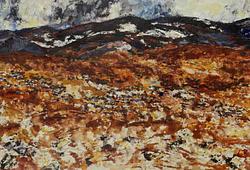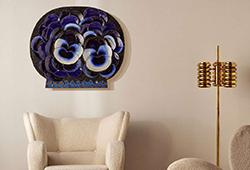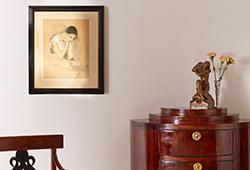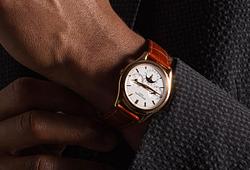Anna Petrus
& Estrid Ericson, a pewter dish, Svenskt Tenn, Sweden, possibly 1986.
Oval dish by Estrid Ericson combined with lion-shaped handles by Anna Petrus, maker's mark, Stockholm and year letter, possibly M10, length 41 cm, width 24 cm, height 9 cm.
Provenance
Hildur Hansson (1912-1999)
Hildur Hansson was born in Southern Sweden. Eventually she was married to Erik Hansson (b. 1906) but unfortunately she was widowed when Erik died in the Finnish Winter war 1930-1940. Hildur was left with their only child, Ingemar. Hildur Hansson had early on become good friends with Estrid Ericson (1894-1981), founder of Svenskt Tenn, and hence started to collect objects from Svenskt Tenn. An interest that continued over the years and their home was filled with some very special pieces of pewter as well as furniture from Svenskt Tenn. When Ingemar Hansson grew up he continued to cultivate the interest for items from Svenskt Tenn he had inherited from his mother. The collection comprises lots nr 329-377
Designer
Anna Petrus was a sculptor, industrial designer, and artist active in the early 20th century. She was born as Anna Petersson, the daughter of a professor of medicine and a countess, and adopted her surname while studying at the Royal Academy of Fine Arts. She inherited a modest fortune at the age of 11 when her mother passed away, which allowed her to pursue her education in London and travel to Italy and France.
Anna Petrus's major international breakthrough came with the Exposition Internationale des Arts Décoratifs et Industriels Modernes in Paris in 1925, where she showcased items in pewter and cast iron, in the Swedish Grace style. Pewter was considered an outdated material at the time, but its popularity grew as designers like Petrus recognised its advantages. In 1924, she began a collaboration with the then newly established Firma Svenskt Tenn. The lion became a recurring motif in Anna Petrus's work, both as sculptures and as stylised decorations.
Read more


















































